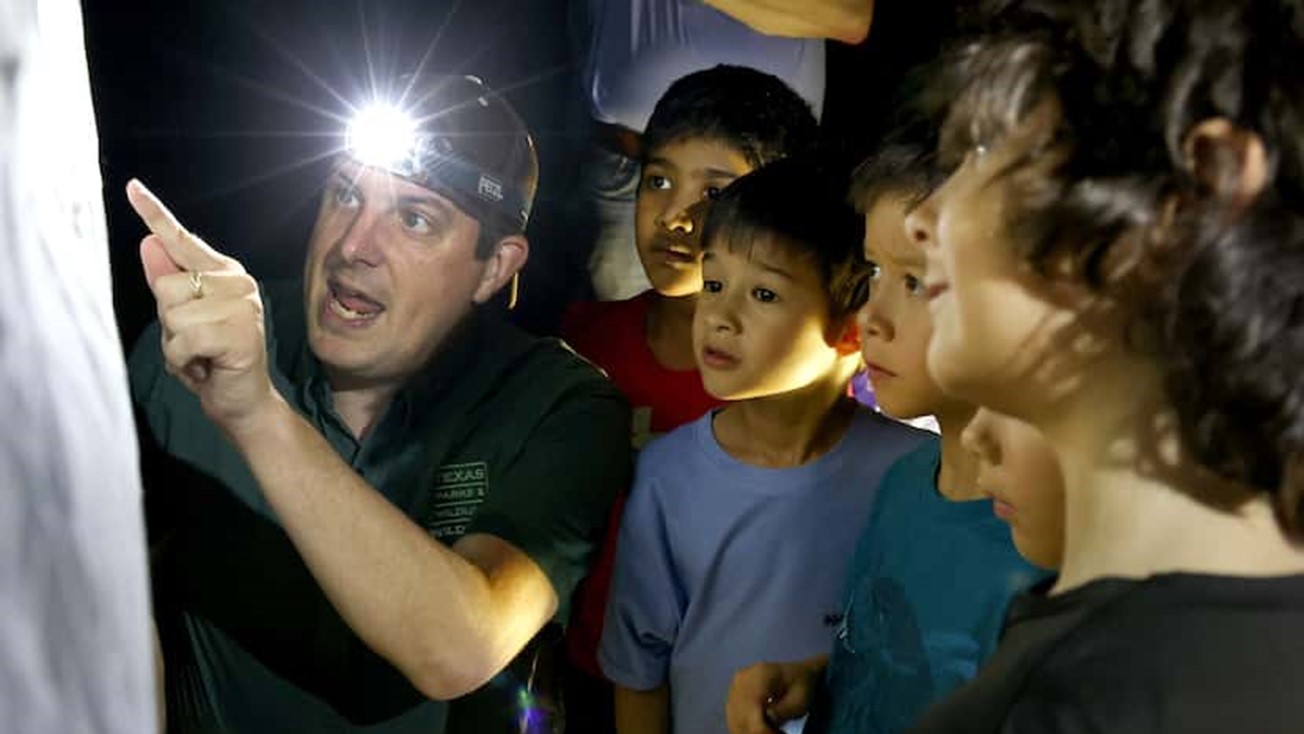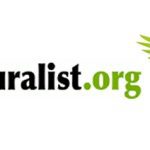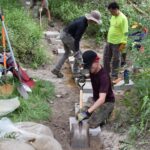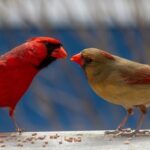Excerpted from the Dallas Morning News, August 5, 2024
Urban wildlife comes alive as Dallas-Fort Worth goes to sleep
As urban sprawl continues, animals that once roamed in the daylight have been forced to come out at night, researchers say.
Photo: Sam Kieschnick, of the Texas Department of Wildlife, points out the discernible characteristics of multiple species of bugs attracted to a white linen bed sheet illuminated by light. The night hike was conducted through Spring Creek Forest Preserve in Garland on July 20, 2024. (SteveHamm/SpecialContributor)
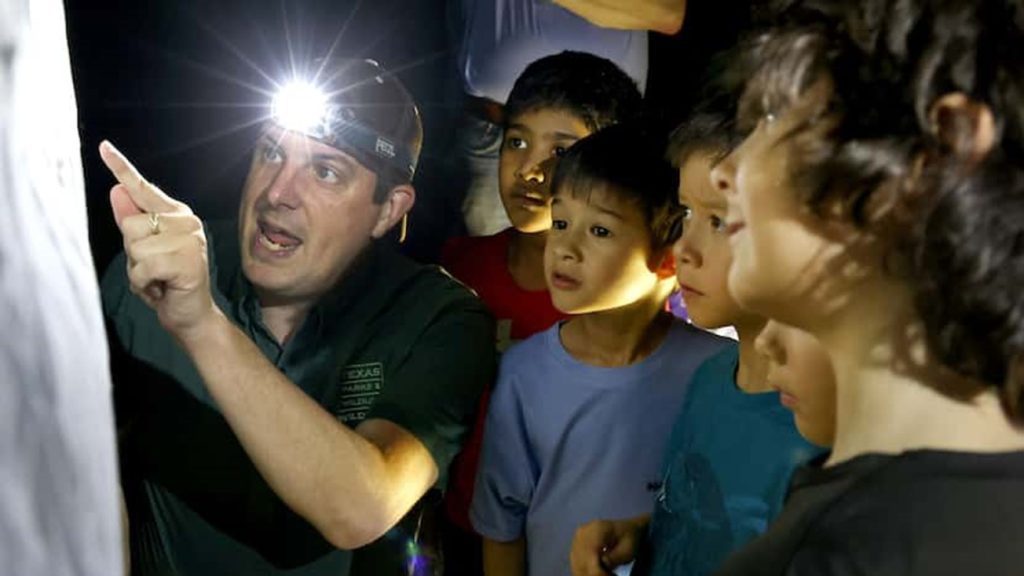
After the sun goes down across the area, other residents of Dallas-Fort Worth begin their late shift. Bobcats stalk the streets, owls perch just out of sight from streetlights, and racoons rummage through trash cans in our neighborhoods.
D-FW is like the “rainforest” for Sam Kieschnick and Rachel Richter, urban wildlife biologists for the Texas Parks and Wildlife Department. They help research, guide and educate private and public individuals and organizations on wildlife.
Photo: Sam Kieschnick, left upper, of the Texas Department of Wildlife, helps young nature enthusiasts locate and identify a variety of insects as a “leaf footed bug” crawls on the back side of an illuminated linen bed sheet which lures insects after dark for optimal observation during a night hike which was conducted through Spring Creek Forest Preserve in Garland on July 20, 2024. (Steve Hamm/SpecialContributor)

While some animals prefer the day, others are nocturnal. And as urban sprawl continues, animals that once roamed in the daylight have been forced to come out at night. And that means citizens should think of what they can do to help improve the environment for wildlife, the biologists and other researchers say.
“We do have some species in urban areas that might behave a little bit differently and are more likely to be nocturnal — because they don’t want to be active when people are active,” said Richter.
Both Kieschnick and Richter work to reduce the conflict between wildlife and urban developers.
“The next disturbance [when humans remove natural landscapes] is on the way. That next parking lot is coming and so [if you’re an animal] you better move, you better adapt, or die. Those are kind of the three choices that urban wildlife has,” said Kieschnick.
D-FW has gained the most number of people in the country in the past few years, according to the U.S. Census. While other cities, like Denver, have mountains or rivers to constrain physical growth, the D-FW area doesn’t have the same geographic barriers to prevent sprawl, said Corey Roelke, a herpetologist at the University of Texas at Arlington.
“We’ve lost many, many species locally because of that — [species] that still occur in rural areas and outside [of D-FW],” Roelke said. Yet the geography of the region is unique and helps Texas rank as one of the most biodiverse states in the country, according to Roelke.
From the Blackland Prairie to Eastern Cross Timbers and the Texas Hill Country, native and invasive plants and animals can thrive.
“We have a number of layers of bedrock in North Texas; because of the tilt of the bedrock, that creates all these different kinds of soil,” said Amy Martin, the author of Wild DFW, which details the plant and wildlife in Dallas–Fort Worth.
“And every kind of soil creates a different plant community,” she said. “And then that community will create a different family of wildlife and birds and insects that are attracted to those particular plants.”
Lurking in the night
“Our urban green spaces really come alive at night,” said Richter.
She described species we may not expect, like the American mink, river otters and green tree frogs, as those we can see once the sun goes down.
Some reptiles, like snakes and lizards, that may generally prefer the day can be found at night in urban areas, Richter said. Not just because of development, but because of increasing temperatures related to climate change. As large parking lots and buildings remove trees, there’s less shade for cold-blooded animals, making nighttime more comfortable.
Photo: A Texas Brown tarantula is coaxed from his safe place underground by Sam Kieschnick of the Texas Department of Wildlife during a night hike was conducted through Spring Creek Forest Preserve in Garland on July 20, 2024. (Steve Hamm/SpecialContributor)
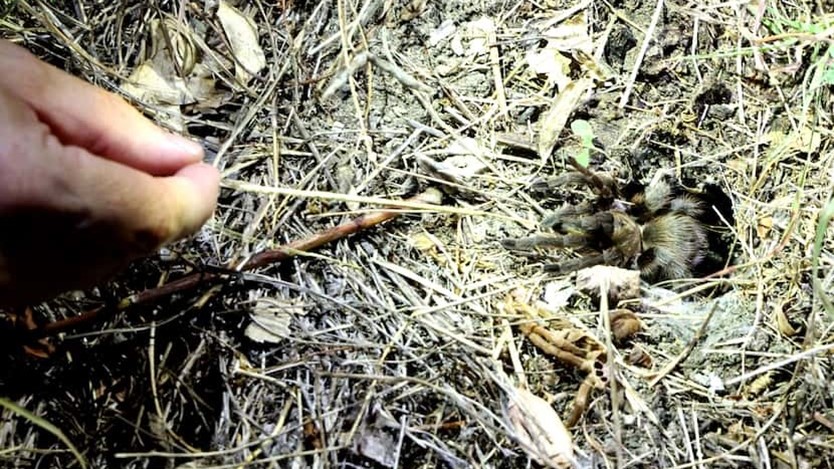
Alligators are native to North Texas and across many parts of the southeastern United States. They are specifically in areas around the Trinity River. However, freshwater bodies in general can support alligators, said Roelke. Earlier in July, a gator was spotted in Coppell, hanging around small tributaries and ponds of Denton Creek.
They can occasionally be seen resting along the banks of rivers during the day, Roelke said However, they prefer to feed at night when it’s easier to ambush prey.
Alligators were labeled as an endangered species in 1967, but conservation efforts helped improve their numbers and they were removed from the list in 1978. However, Texas still considers gators a protected species and special permits are required to hunt, raise and possess them.
Bats have also had to deal with habitat loss in the face of urban sprawl and development, according to Kate Rugroden.
Rugroden is the director of special projects at Bat World Sanctuary, a nonprofit that provides treatment for injured bats, conservation of wild bat colonies and public education about bats. She’s also the director of Bat World MidCities in Arlington, a satellite facility of Bat World Sanctuary.
Bat colonies in North Texas don’t reach the same numbers as those in Austin or San Antonio, but they can be found across the area, according to Rugroden. Of the 45 native bat species across the United States, 34 of them live in Texas and six can be found in North Texas.
Most bats are insectivores, while some are nectarivores, which means they prefer fruits and nectar. Less than 1% are carnivores. Rugroden says this makes them a keystone species since they help protect important crops, like cotton and corn, by keeping insect populations from destroying plants, while also acting as pollinators.
Yet habitation loss has forced them to live closer to humans. Tree-roosting bats specifically see the loss of habitat as new developments pop up. This occasionally leads them into the crevices of nearby homes, putting them directly into harm’s way from humans.
A number of bat species nationwide, including the tricolor bat, are dealing with a fungal disease known as white-nose syndrome, according to Rugroden. Bats can transmit the disease to each other. As living spaces shrink, this can increase the spread of the disease as the bats come in closer contact with each other.
There’s also some evidence to suggest that humans can help spread the disease by entering caves or mines, where the disease is present, and carrying it to new caves or mines and new bat populations.
Roelke stressed that while urban wildlife faces many challenges, some species are finding their way through these new environments and have been doing so for a long time.
Those species include raccoons, opossums and birds, including grackles, which are common in North Texas. While many species are seen as a nuisance, or something to fear, they also provide valuable functions to the urban ecosystem, he said.
What can we do?
Wildlife should be observed from a safe distance. If you wish to experience wildlife from your home, Bat World Sanctuary has live webcams of their bats. Feedings happen from 7 p.m. to 9 p.m.
Local parks are also great places to experience wildlife of all kinds. Not only can you see them in action, but, according to Martin, there are both physical and mental health benefits by being in more green spaces outdoors.
Photo: Sam Kieschnick, upper right, of the Texas Department of Wildlife, accompanies young area nature enthusiasts in their search to locate and identify a plethora of insect species during a night hike which was conducted through Spring Creek Forest Preserve in Garland on July 20, 2024. (Steve Hamm/SpecialContributor)
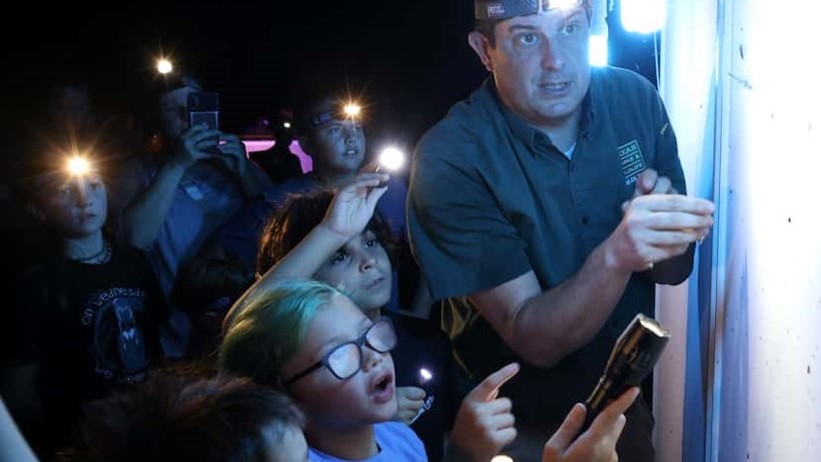
For those looking to create better spaces for wildlife, Rugroden recommended rehabilitating buildings and parks, instead of building new developments that can force wildlife from their habitats.
Gardening with native plants and setting up bird feeders can also help improve the environment for wildlife, according to both Richter and Roelke.
If you’d like to spend more time outdoors, Kieschnick recommends iNaturalist, a free app where nature enthusiasts can upload pictures and other users can help identify the species in the photographs.
Kieschnick is an avid user of iNaturalist and recently helped host a night hike at Spring Creek Forest Preserve in Garland. He’s a big fan of the app’s ability to build communities and help people learn more about their local wildlife.
Jordan Chapman reports on science for The Dallas Morning News as part of a fellowship with the American Association for the Advancement of Science.

